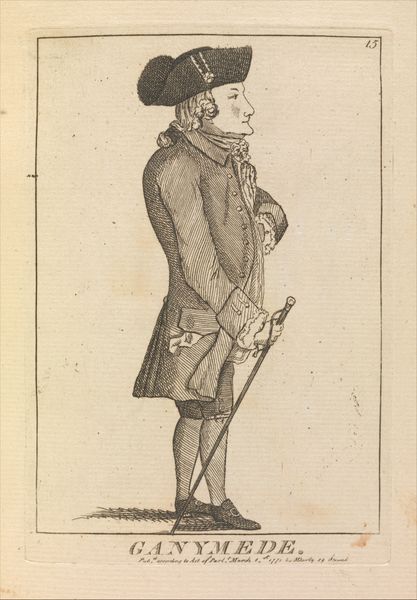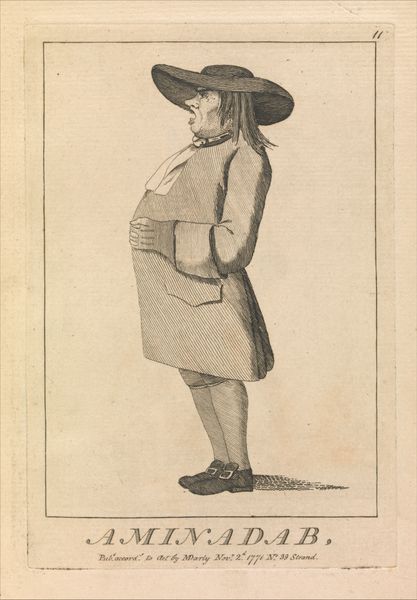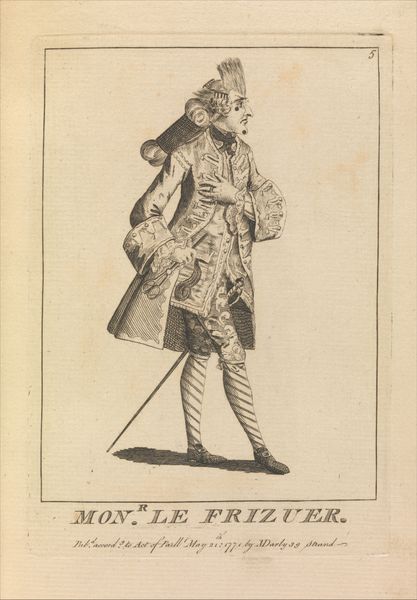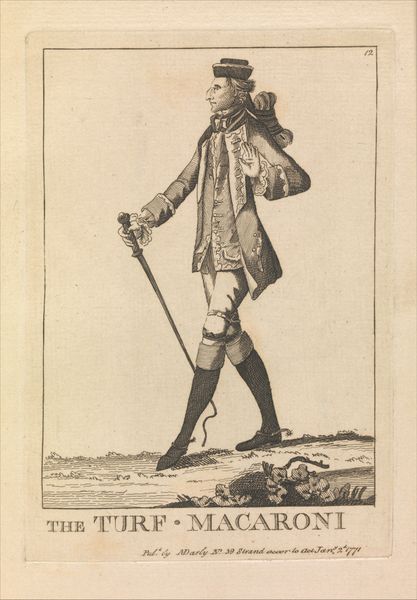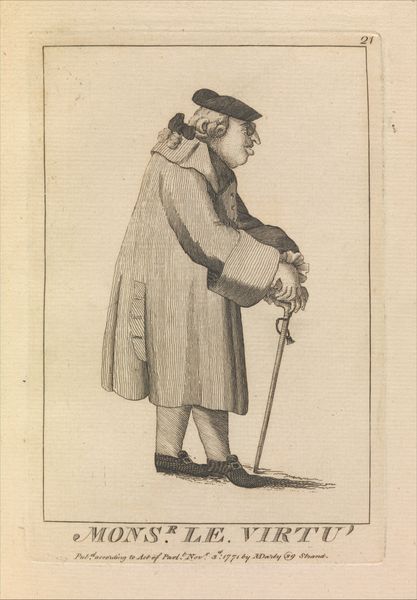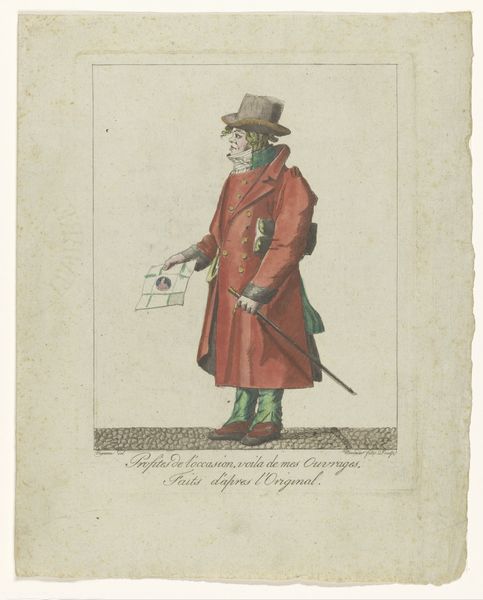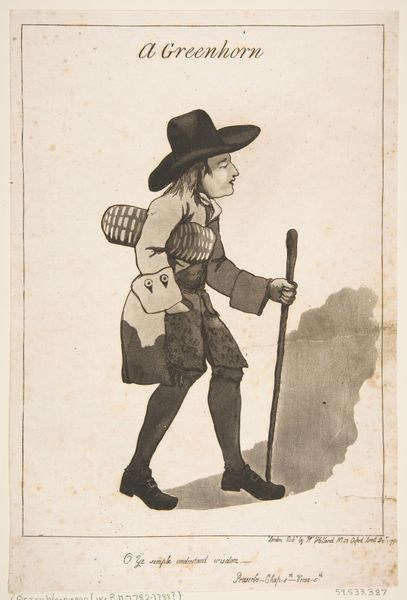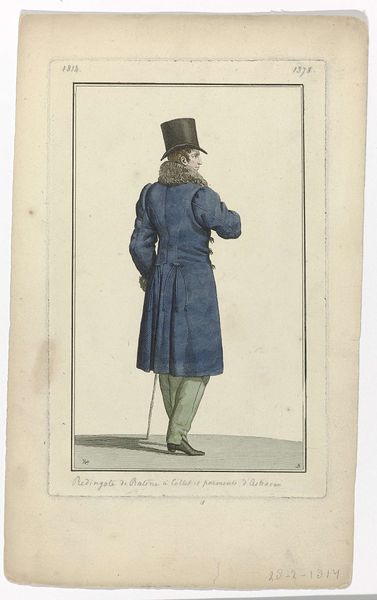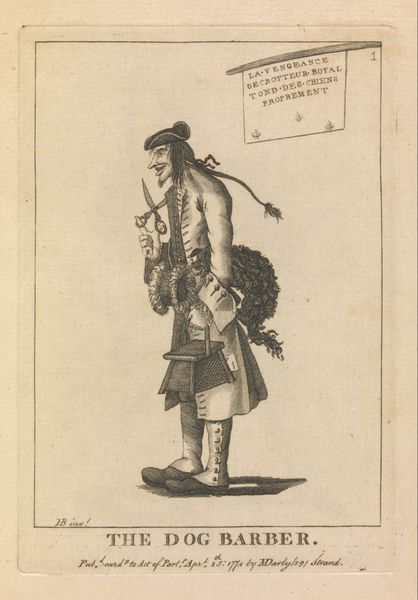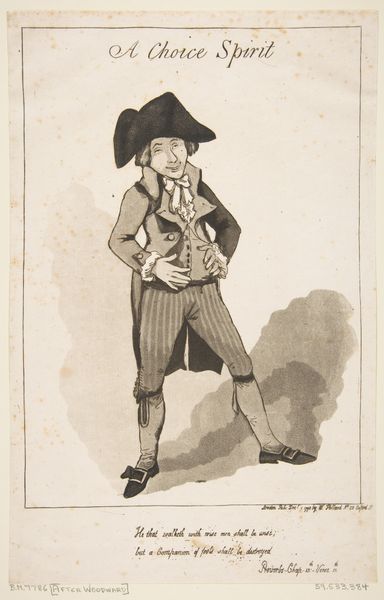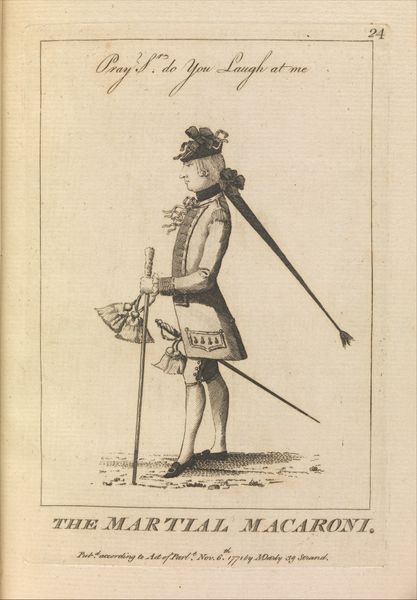
drawing, print, engraving
#
portrait
#
drawing
# print
#
caricature
#
figuration
#
men
#
line
#
history-painting
#
engraving
#
profile
Dimensions: plate: 6 5/16 x 4 3/16 in. (16 x 10.7 cm) sheet: 8 13/16 x 5 7/16 in. (22.4 x 13.8 cm)
Copyright: Public Domain
Matthew Darly created this print called “The English Jesuit” around 1771. The dominant visual symbols are those of status: the wig, the hat, the cane, and the gloves. These project an air of respectability and tradition. Consider the wig, which carries echoes of power and authority across time. We see it in formal portraits of kings and judges, but here, it is mocked and parodied. It evokes the rigid structures of the past, yet is used in satire. The cane, a symbol of support and guidance, can also represent power and control. In ancient Egypt, the scepter was a sign of pharaonic authority, while in religious art, a staff often signifies leadership and divine guidance. Here, it may symbolize the Jesuit's supposed moral authority, but held in a caricature. This image engages viewers by playing on collective memories and subconscious associations. The artist presents symbols laden with historical weight, only to subvert and question them. In doing so, he taps into the cyclical nature of symbols: how they resurface, evolve, and take on new meanings across different eras.
Comments
No comments
Be the first to comment and join the conversation on the ultimate creative platform.
